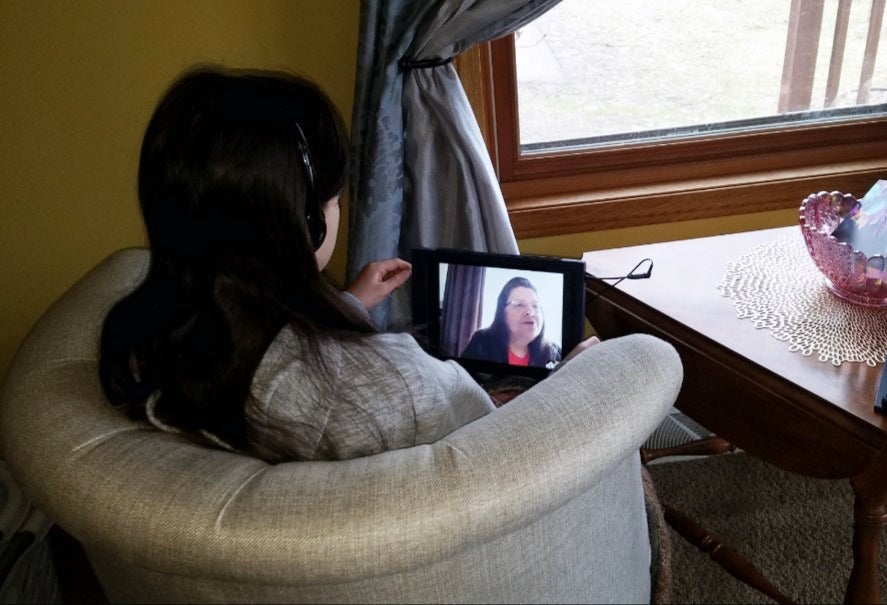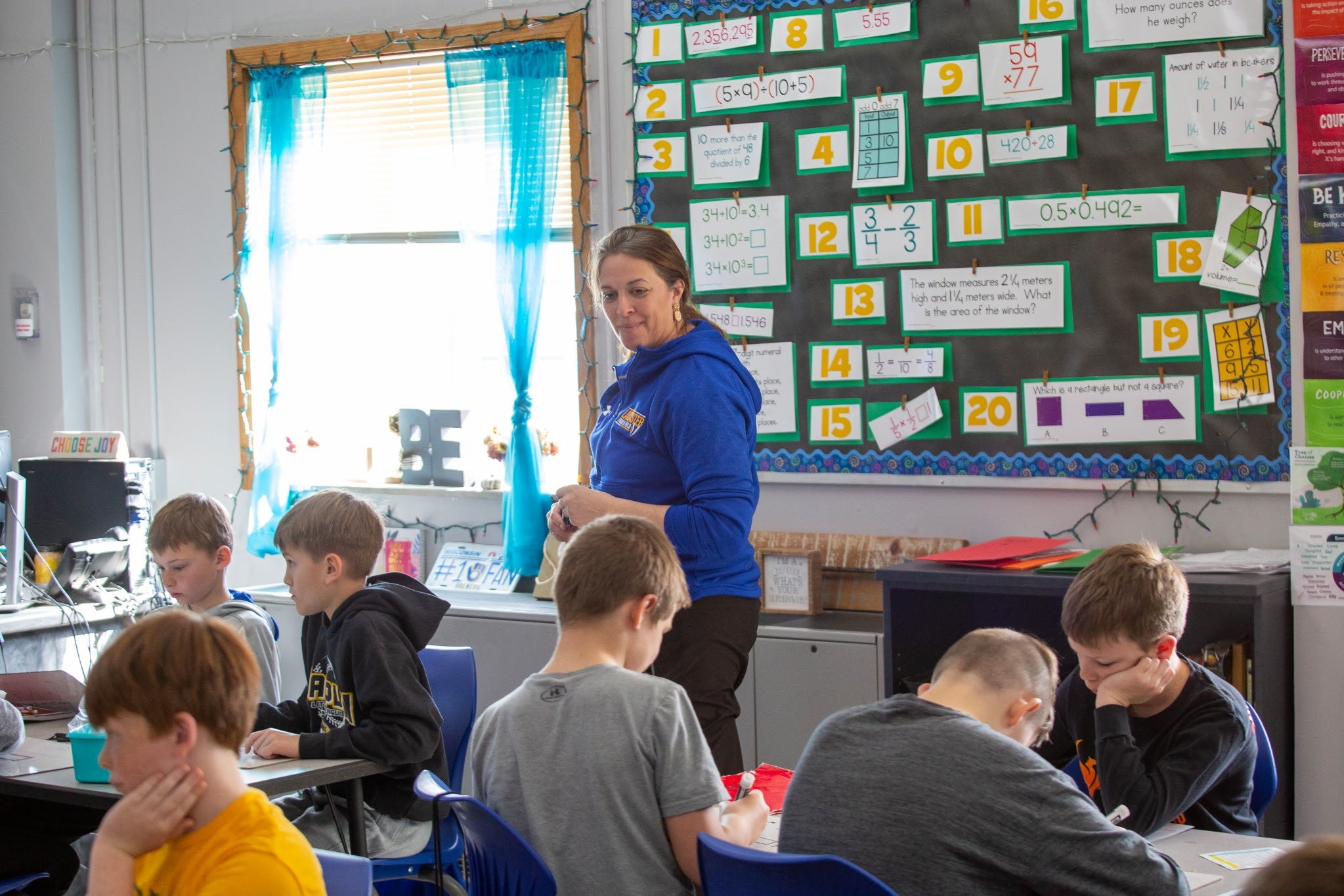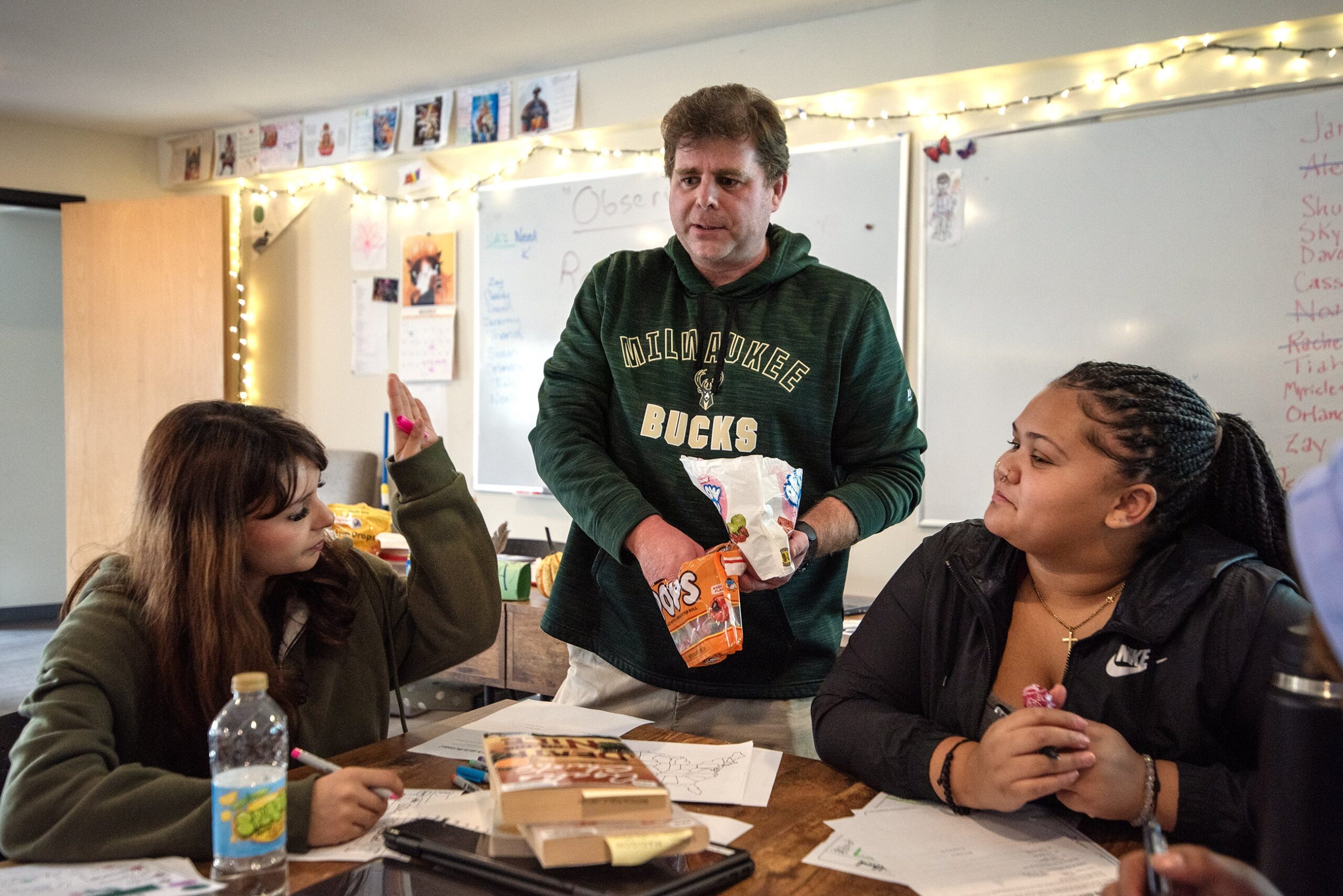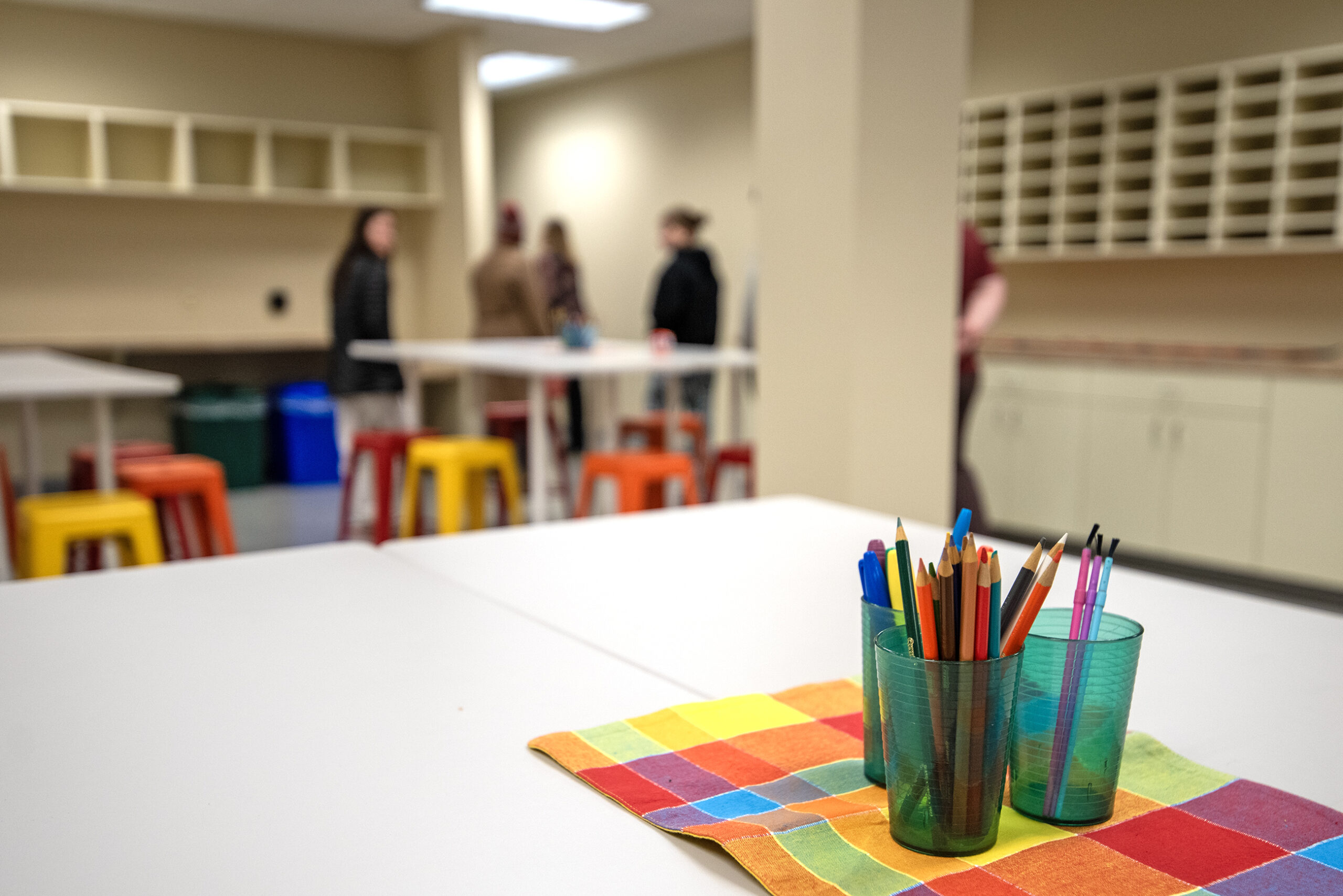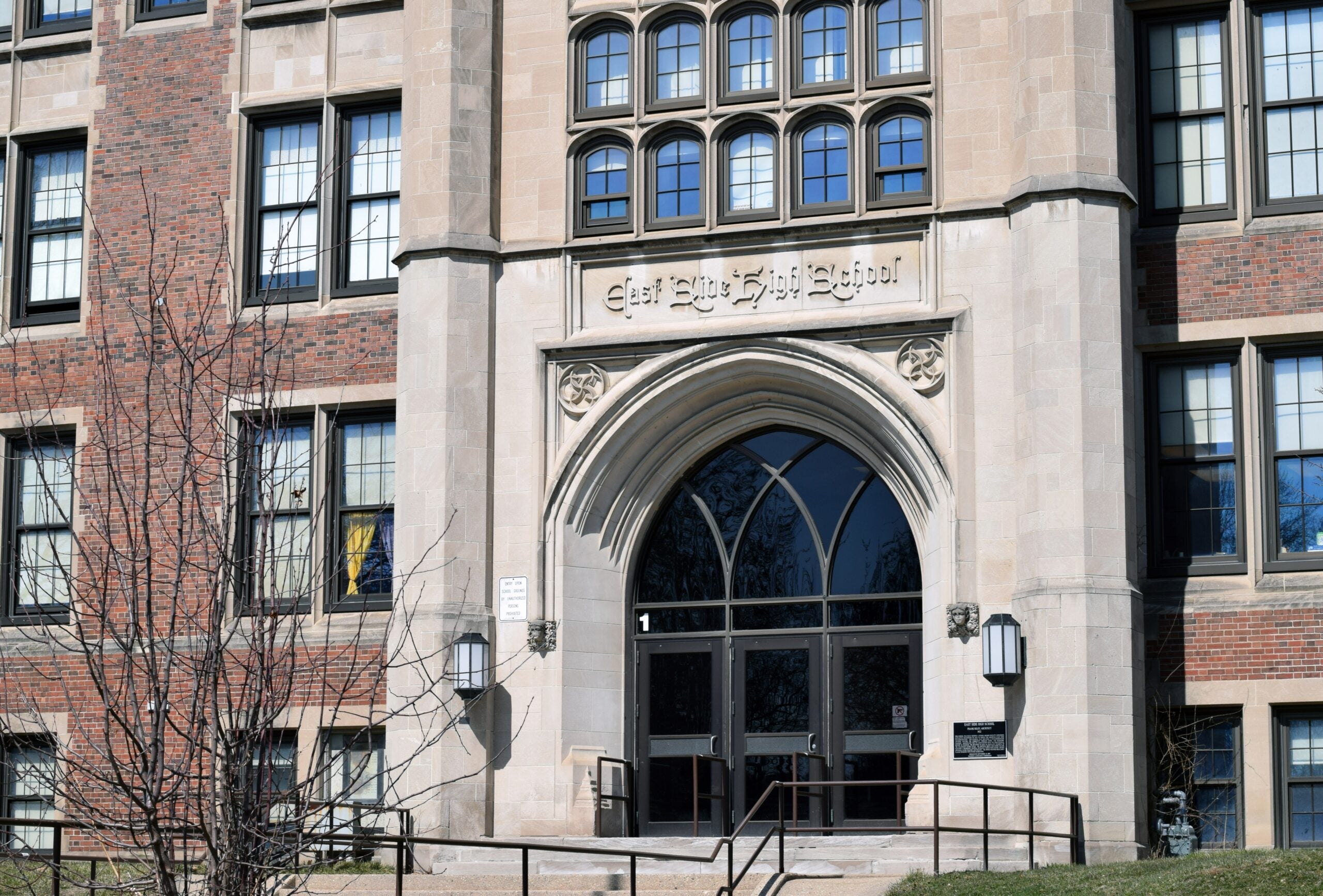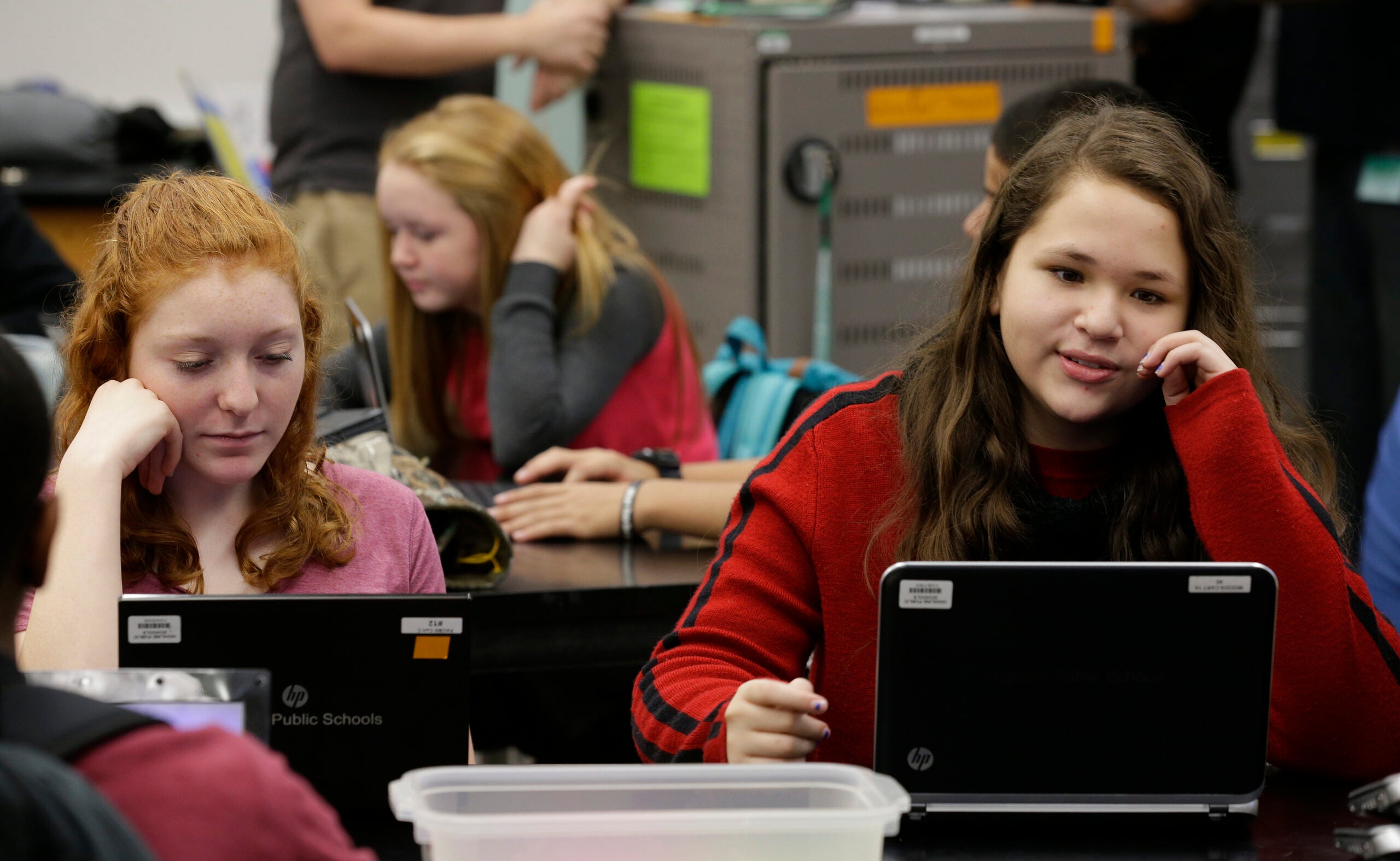School district administrator Aaron Engel doesn’t sugarcoat what the learning environment has been like for the more than 1,400 students at Gale-Ettrick-Trempealeau School District (G-E-T) since mid-March when students across the state were forced home by the COVID-19 pandemic.
“Given the circumstances, things are going about as well as they can. We know there are many students who are struggling at home, whose families are struggling at home with this school closure or the loss of jobs or hours. Given that, our students and teachers have been incredibly resilient and have done a phenomenal job adjusting to this learning environment,” he said.
G-E-T is made up of students who live in or near the villages of Ettrick and Trempealeau and the city of Galesville in southern Trempealeau County, about a half-hour north of the city of La Crosse.
Stay informed on the latest news
Sign up for WPR’s email newsletter.
A Student’s Perspective
Quinn Wenthe, a sophomore at G-E-T High School, has been adjusting to virtual instruction, which provides less structure than a normal school day.
“I have to be honest, I stay up way late and sleep in way late. When I do get up, I check my emails from teachers and make a plan of what I will get done for homework based on the schedules teachers send out,” Wenthe said. “I make sure to get enough done that I won’t have to cram later in the week. I work on homework for 3 to 4 hours daily.”

“Almost all of my classes are watching an instructional video and filling out a worksheet or a packet on the material,” she continued. “Once I finish my homework, generally a subject or two a day, I go on my phone until it’s time for bed.”
“Losing the second half of my sophomore year has been really hard. I hate not being able to see everyone,” she said.
Wenthe fills her days on FaceTime and Snapchat with her friends and taking the dog for long walks.
She and her brother, who is a senior, also spend time practicing track-and-field, but the spring sport was canceled. Wenthe said losing a year of track has been the “hardest blow” for her in what has become the new normal.
While she describes her days as monotonous and repetitive, Wenthe said she feels she’s learning what she needs to in her sophomore year.
“Although this is kind of an unorthodox way of learning, I honestly believe it’s progressing my education. All of this is uncharted territory, of course, but all of my teachers and the teachers my friends have told me about are doing their utmost to make sure everyone understands the content and is able to do it,” she said.
“Teachers reach out to their students multiple times a week and make it very clear in videos that if a student has any questions or concerns, about school or life in general, they can contact them,” Wenthe added. “While I definitely liked school better in the classroom, teachers are doing their best to create a sense of normalcy when doing everything online, which really does help to further learning.”
A Parent’s Perspective
The Foust family lives in rural Trempealeau. Mother Sherry Foust is considered an essential health care worker, but as a speech-language pathologist at an area health facility, she’s working reduced hours helping people who’ve had a stroke or suffer from dementia. Father Ryan Foust is still working full-time in the power generation field. Their three kids, ages 7, 9 and 11, were in first, third and fifth grades at Trempealeau Elementary until stay-at-home orders suddenly forced them to be homeschooled.
“Overall, my family is staying busy and has maintained positive attitudes since the stay-at-home precautions have been mandated. We have all had struggles adapting to more time at home, more time together, and creating academic routines in an environment that is not as structured or as socially stimulating as school,” Sherry said.
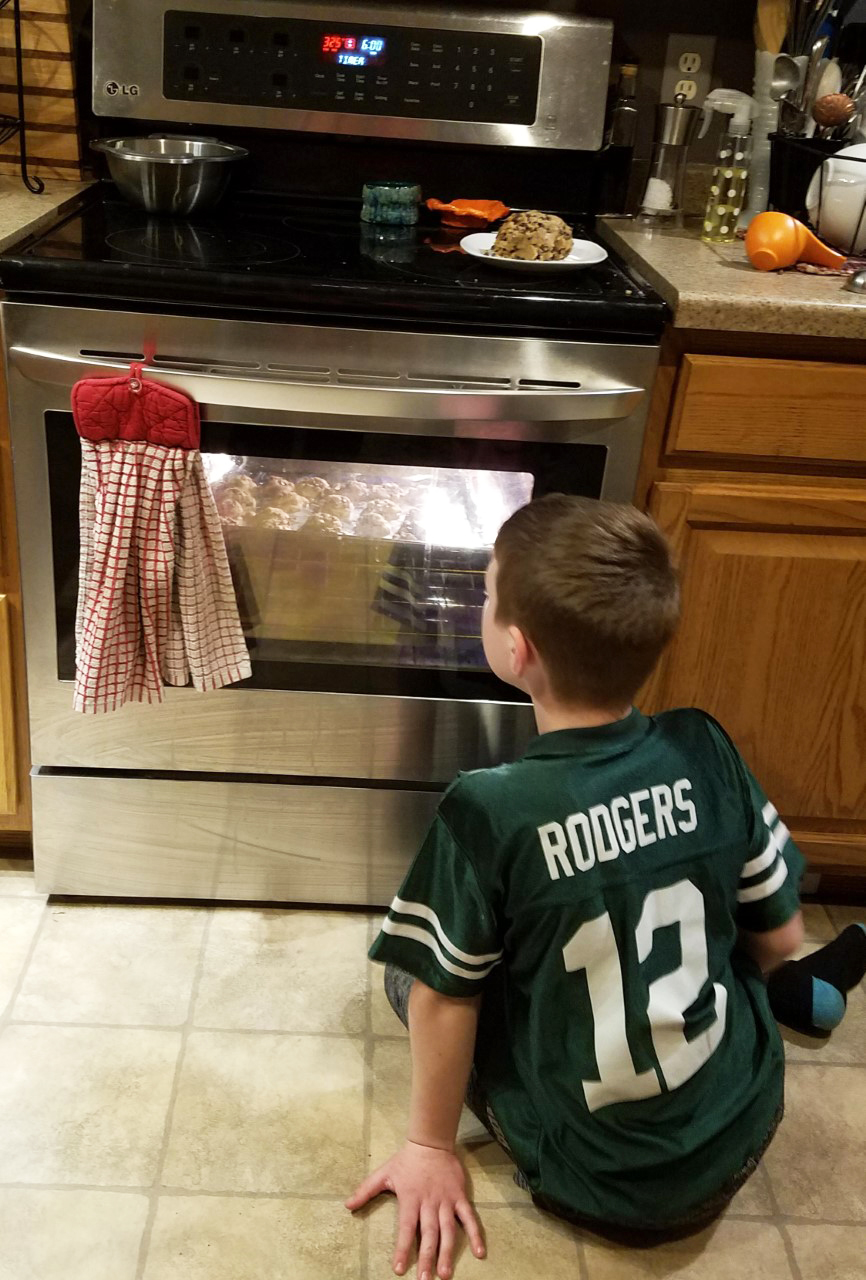
Sherry said there have been a handful of days when she and her husband have both been working, leaving the kids to handle schoolwork and chores on their own.
“These are the days that create the most stress for me,” she said. “Checking in with them via video chat eases some of that anxiety. My kids have more non-academic screen time on these days and have complained that breakfast and lunch aren’t as good because they have to heat up leftovers or make a cold lunch. These have been the days they complain about being bored as they aren’t allowed to rough-house or spend much time outdoors due to my concerns about them getting hurt while I am gone.”
The Foust kids used to be in school from about 7:30 a.m. to 3 p.m., but the routine has changed in the last month and a half.
“A typical weekday (now) begins with being up and ready by 9 a.m. for daily virtual classroom visits for my third and fifth grader. The older two do most of their academic subjects via apps on their school-allocated iPads. My first-grader has a variety of worksheets sent via snail mail to our home weekly and a couple of apps for reading and math,” Sherry said. “We try to have all schoolwork done by lunchtime, then get outside, do household chores and spend time together as a family before free time for individual screen use.”
“Like many out there, I remind myself that there are lessons being learned that won’t be evident until we have gained distance from this pandemic,” Sherry added. “My children are learning, even if it is not in the style we are accustomed to.”
Teachers’ Perspectives
Patty Behan is a fourth grade teacher at Trempealeau Elementary School. She’s been a teacher for 30 years, the last 24 at G-E-T.
Instead of seeing her 23 students for long stretches of the school day, she now holds a daily 45-minute virtual class meeting every morning, then turns the students loose to do their work from home. She tries to hold a one-hour virtual meeting with individual students each week.
“It’s really hard. That’s not how I teach. Not being able to see students face-to-face, yes, I see them over the computer every day. I hate it,” Behan said. “I dropped a book off for a student the other day at his house and it was so strange not to be able to go up instinctively and to give him a hug. I know he felt it too.”
Jeff Bork is a math teacher at G-E-T Middle School in Galesville. He’s been a teacher for 15 years. He instructs 100 seventh graders using a variety of methods, from paper to newly created video lessons.
“I’m like a first-year teacher again. We have to reach out more, we’re sending more emails, we are developing a curriculum differently,” he said.
Bork said G-E-T teachers have had a lot of help with IT and have been willing to try new teaching methods until they find something that works.
“All of us teachers are sad. We don’t get to spend time with kids. But I also know this is something we can’t prevent, so we are rolling with the punches and I think our district has been really good in supporting us,” he said. “We’re doing our best to meet all their needs. Our goal is to make sure they have everything mastered that they need to, but we have to be real and understand that we’re going to have to do a little review work at the beginning, (of next school year) just on some of those concepts that we missed.”
There are 115 teachers and 105 staff at G-E-T. In March, the G-E-T school board voted to pay its employees through the end of the school year and put staff members on call.
A Staff Member’s Perspective
Chuck Forster has filled a lot of roles in a 44-year career — teacher, guidance counselor and principal — and he’s spent the last nine years as a bus driver.
“In the first few days of homeschooling, I had little role. There were no bus routes. I helped our business manager set up food delivery routes for our school lunch program and I delivered homework to students,” he said. “Since homeschooling started, I have delivered lunches whenever the district has needed me and am on their schedule rotation.”
In addition to delivering meals to student, the district has created a series of online resources including virtual counseling.
An Administrator’s Perspective
Aaron Engel, the G-E-T administrator said he’s most concerned for the students who benefit from being at school on a daily basis.
“This school closure is going to exacerbate our equity gaps. The academic gap is likely going to grow during this closure for those in special education and those experiencing poverty,” Engel said. “We know that when we return to school, we will need to provide additional opportunities for our most vulnerable students to ensure they not only stay on track but catch up.”
In addition to serving as district administrator, Engel is also the director of special education at the G-E-T School District. He said teachers have made sure special education students have any modifications and accommodations they need and check in with them at least once a week to make sure their needs are met.
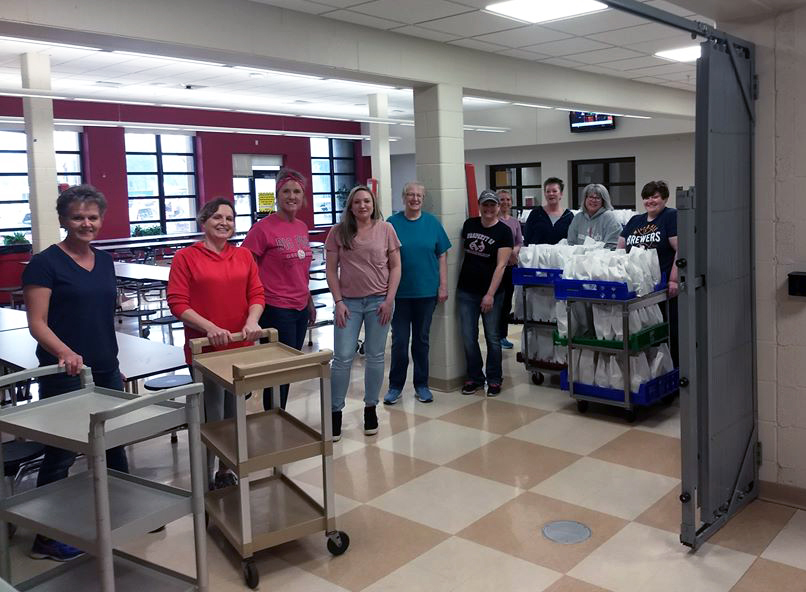
“What most impresses me is the incredible job our teachers have done to adapt to this incredible disruption. Overnight, teachers have shifted from in-person instruction to by-mail, phone, and online education,” he said. “They are calling students every week, driving to homes to ensure students get instruction or a friendly face, and volunteering to help deliver meals or put together mailings … Many are doing all of this from home while juggling their own children or adjusting to spouses who have lost income.”
“I am also impressed with our support staff who have volunteered to help wherever they can,” Engel added. “They have helped with making lunches, driving for food deliveries, putting together weekend food bags for needy students, and cleaning in the schools. Our staff have done an incredible job.”
Engel said access to reliable internet has been an issue for some families, but 90 percent have access to online learning. He said paper lessons are available to students without internet access.
He said there will be efforts made to bring in-person closure to this school year as many events like proms and graduations across the country will be celebrated virtually, but no formal plans have been made yet.
“This has not been a lost year,” said Engel. “Our students are continuing to learn different lessons at home and in different ways. We have seen incredible things from our students: students teaching younger siblings when they struggle, parents and students opening up and connecting in more significant ways than in the past, and a dedication to homework from some that has never existed before. In addition, our teachers are learning and honing new skills to be able to reach students in new ways that will continue on after this school closure ends.”
Editor’s Note: An earlier version of this story misidentified Chuck Forster. It has since been corrected.
Wisconsin Public Radio, © Copyright 2025, Board of Regents of the University of Wisconsin System and Wisconsin Educational Communications Board.
